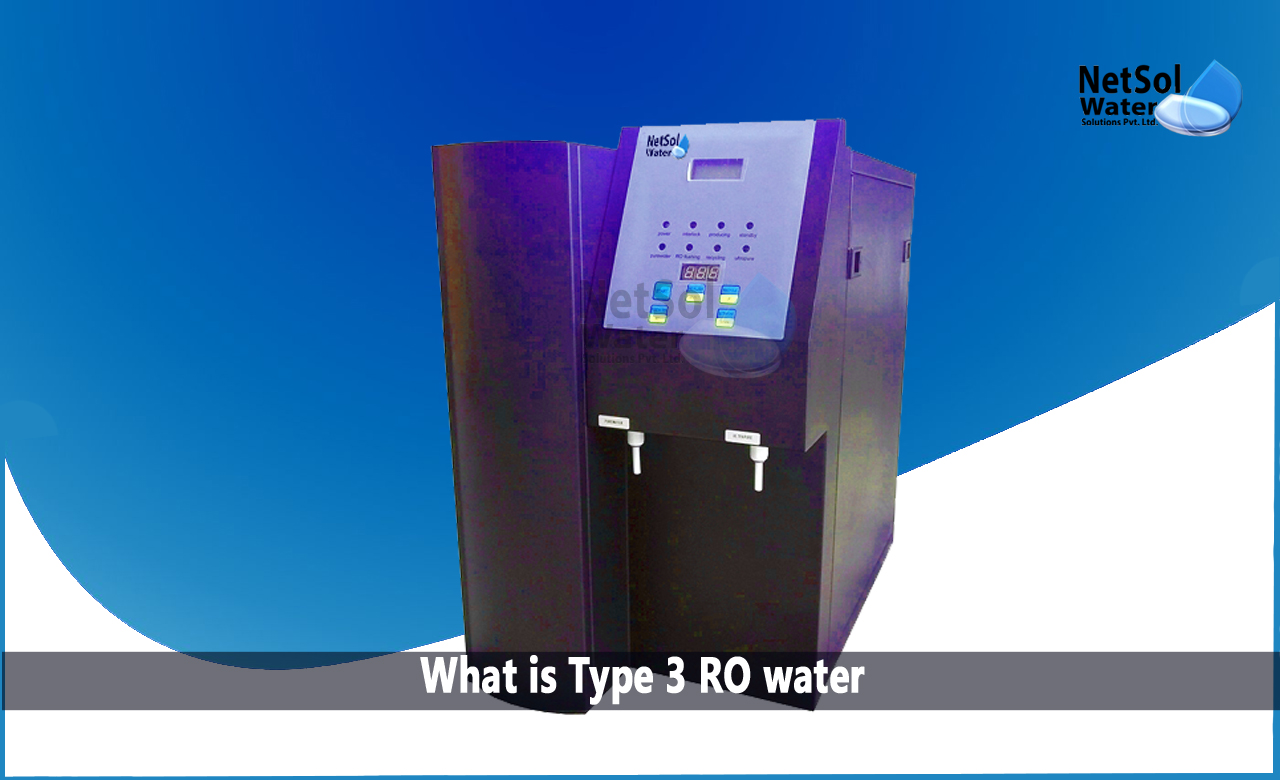What is type-3 RO Water & its application?
As you are already aware, there are several levels of water purity available based on the tasks. This ranges from Type III for common applications like washing beakers, up to Type I+ for delicate ones like the intriguing-sounding “graphite furnace atomic absorption spectrometry (GF-AAS)”.
Let’s understand about the Type-3 RO water.
What is type-3 RO Water?
Reverse osmosis, a method of water filtration, produces Type III grade water, usually referred to as RO water. It has the purity of any sort of pure water, and is frequently used as the starting point for simple lab tasks like washing glassware, heating baths, or preparing media. It can also be utilized as feed water for the manufacturing of Type I water.
Water Quality of type III water
|
Parameter |
Grade 3 |
|
|
pH value at 25oC |
5.0–7.0 |
|
|
Conductivity (μS/cm) at 25oC, max |
5.0 |
|
|
Oxidizable matter oxygen content (mg/l), max |
0.4 |
|
|
Absorbance at 254 nm and 1 cm optical path length, absorbance units, max. |
– |
|
|
Residue after evaporation on heating at 110oC (mg/kg), max |
2 |
|
|
TOC (μg/l), max |
200 |
|
|
Sodium (μg/l), max |
10 |
|
|
Silica (μg/l), max |
500 |
|
|
Chloride (μg/l), max |
10 |
|
Applications of Type III water
Purified water that is acceptable for non-critical lab uses such as filling autoclaves, water baths, and disinfector feed is Type 3 laboratory water.
Additionally, it serves as feed water for Type 1 ultrapure laboratory water systems, as well as being utilized in environmental chambers and plant growth rooms. Type 3 laboratory water may also be referred to as primary-grade pure water, because it has up to 99% of impurities eliminated.
Uses for Type 3 (Primary Grade) RO Water generated by this technique include:
1. Glasswasher
2. Autoclave for food
3. Feed Laboratory applications that are not critical
4. Steam and humidity producers
Reverse Osmosis water purification
Almost, all types of pollution can be effectively eliminated by reverse osmosis. Utilizing specialized, semi-permeable membranes, more than 95% of ionic and organic pollution is typically eliminated.
Water is applied to the membrane under pressure; part of it passes through (the permeate), leaving the concentrate—which has the majority of the impurities—behind.
Advantages of Type III RO Water
1. By preventing any impurities, it provides us with pure and clean water.
2. The RO systems are relatively space-efficient and small.
3. With this technique, water can be purified without the need of any chemicals.
4. The RO system has a very low energy need.
5. RO systems are completely automated.
Conclusion
The only methods used to remove impurities from Type 3 water are reverse osmosis (RO) and carbon filtering. RO is the most economical method. Diffusion, as opposed to separation, is used in RO technology to reject constituents with a larger molecular weight.
Rejection rates depend on factors like feedwater pressure, temperature, and the RO membrane's physical state. This implies that rejection varies, but generally rises as a molecule's ionic charge and size increase. Therefore, RO water cannot be specifically categorized.
How can we assist?
Netsol Water provides premium water treatment systems. We keep all consumables and spare parts in stock for local delivery. Routine servicing and repair can be performed, by our network of skilled engineers.
These water treatment plants, including commercial RO Plants, are provided with turnkey packages for installation, commissioning, and on-going maintenance. For further information, contact us at +91 9650608473 or email at enquiry@netsolwater.com



